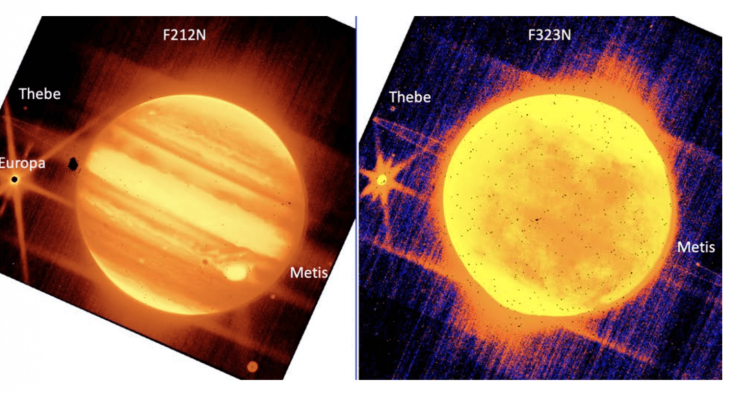Humanity can now get a better look at the largest planet in our celestial neighborhood, our solar system.
NASA's recently commissioned space observatory, the James Webb Space Telescope, continues to make history as it photographs many of the cosmic bodies we know and want to know more of; it even took a picture of Jupiter and its moon, Europa.
NASA's newest space telescope recently received its commission, with NASA celebrating the event by releasing the first pictures the space telescope took when it became a commissioned space telescope.

James Webb Space Telescope Jupiter Picture Details
NASA mentioned in a blog post that the pictures of Jupiter and Europa were taken using the James Webb Space Telescope's (JWST or Webb) NIRCAM instrument 2.12-micron filter.
Thanks to the space telescope's instrument, we can clearly see the gas giant's distinct bands that encircle it and its Great Red Spot, a storm bigger than the Earth.
Contrary to the name, Webb's picture of the Great Red Spot appears white due to the process the picture underwent.
On the other hand, Jupiter's moon, Europa, can be clearly seen to the left of the gas giant.

However, that isn't the only Jupiter moon Webb captured on film. Thanks to NIRCam's 3.23-micron filter and its 2.12-micron filter, Webb was able to also capture Thebe and Metis, moons that couldn't be clearly seen using the latter filter.
Aside from Jupiter's moons, Webb was also able to capture some of the planet's rings on film, which stood out in the telescope's NIRCam long-wavelength filter image.
Stefanie Milam, Webb's deputy project scientist for planetary science based at NASA's Goddard Space Flight Center in Greenbelt, Maryland, mentioned that she was dumbfounded when Webb was able to take a picture of Jupiter's rings, describing the feat as "absolutely astonishing and amazing."
Bryan Holler, a scientist at the Space Telescope Science Institute in Baltimore, said that when Webb's deep field images released the other day and its photos of Jupiter were combined, the result would demonstrate the full capabilities of what Webb can observe.
Holler is also one of the experts that helped plan for Jupiter's picture-taking using Webb's instruments.
John Stansberry, observatory scientist, and NIRCam commissioning lead of the Space Telescope Science Institute said that the pictures of Jupiter were designed to provide "nice images" of the entire disk of the planet. However, the wealth of additional information about very faint objects, such as the planet's rings, Metis, and Thebe, was "absolutely a very pleasant surprise" for a picture taken with approximately one-minute exposures.
Keep in mind that Webb is able to take pictures of this quality despite the fact it was hit by a micrometeoroid sometime at the end of May, specifically its Webb's primary mirror's C3 segment.
What's Next For Webb?
NASA is planning on using Webb's infrared instruments to properly observe and take photos of the supermassive black hole at the center of the Milky Way galaxy, named Sagitarrius A*.
It is also planning to use the space telescope's instruments to study exoplanets.
Additionally, it could also be used to study fast-moving objects in space, such as asteroids, which it did when it was taking pictures of Jupiter and its moons, per Space.com.









